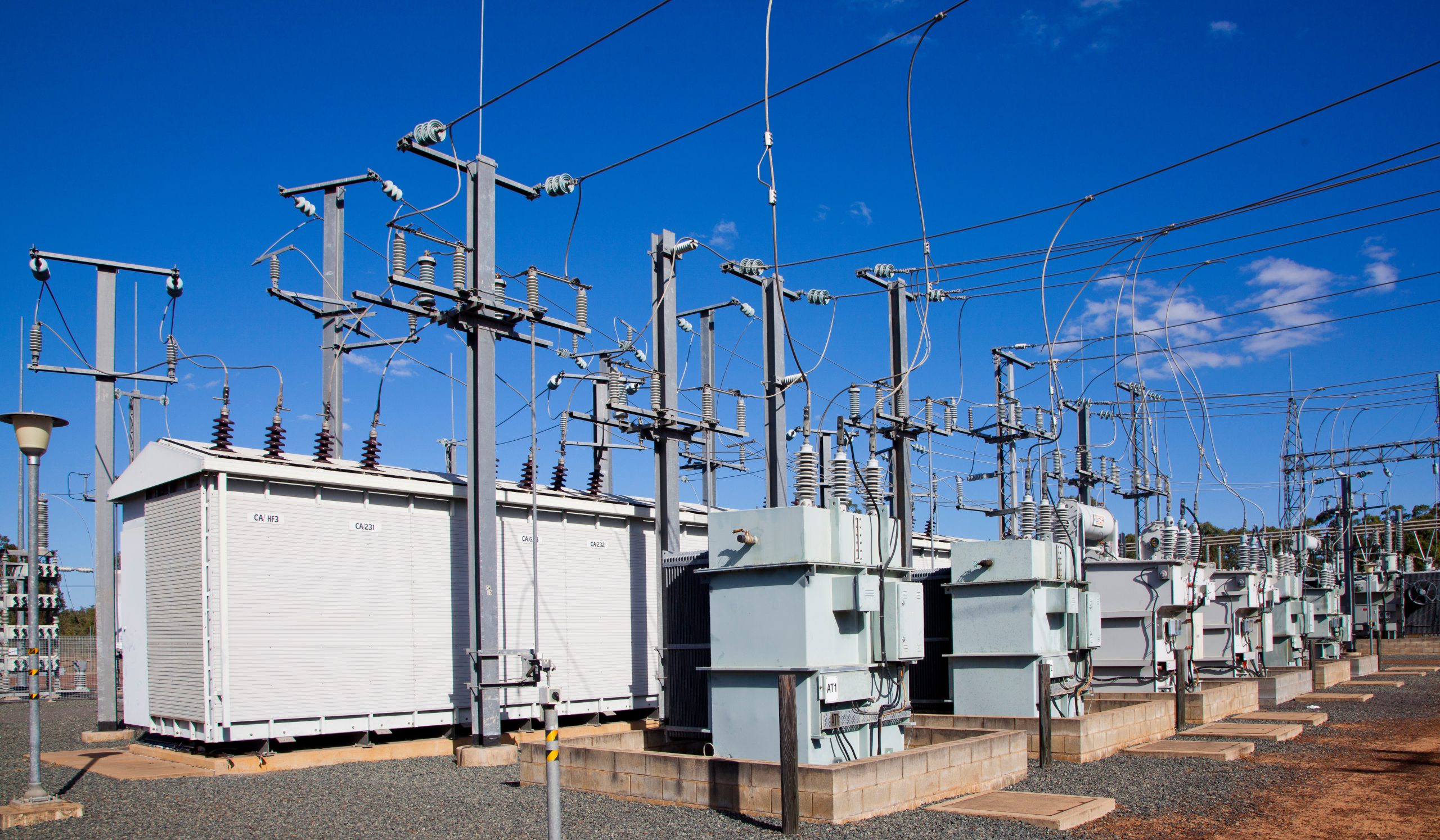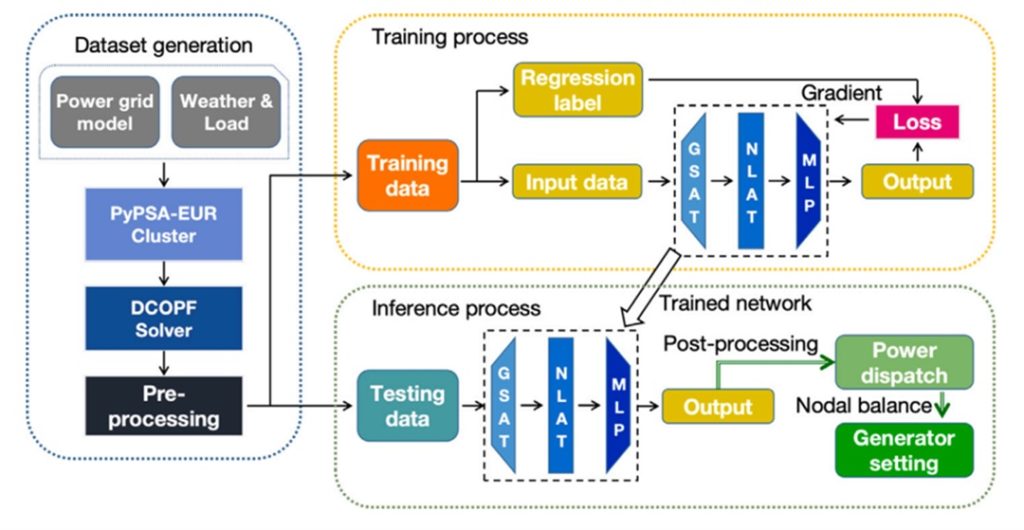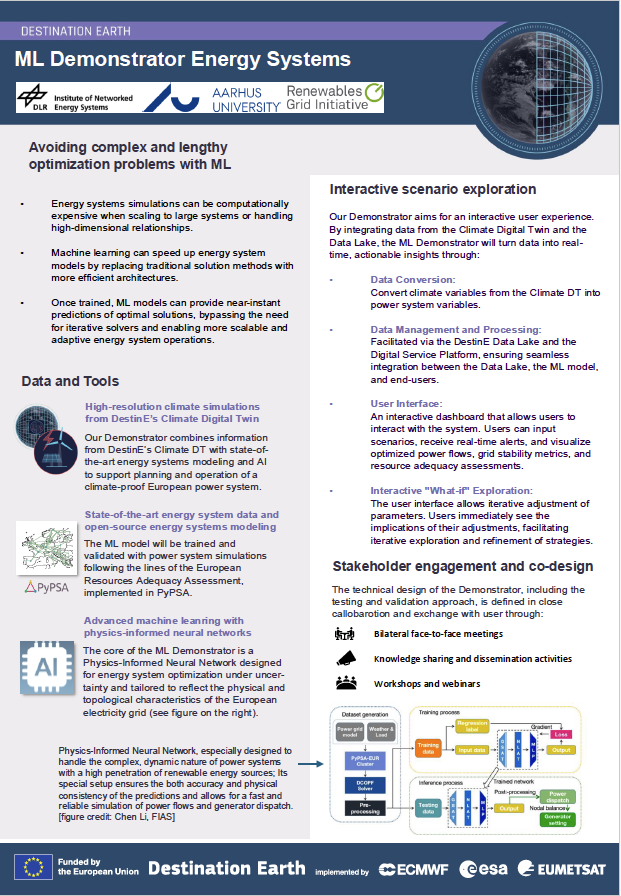
Machine Learning Demonstrator – Energy Systems
Supporting decision-making in grid planning.
Main contractor: German Aerospace Center (DLR), Institute of Networked Energy Systems
What is it? European Transmission System Operators (TSO) must plan and manage the European extra-high-voltage electricity grid, ensuring the infrastructure can meet the demands.
With the share of renewable energy sources increasing, meteorological simulations become an increasingly important information for grid management. At the same time, climate information is becoming more and more important for planning and adequacy assessments. DLR’s Institute of Networked Energy Systems and its partners (Aarhus University and the Renewables Grid Initiative [RGI]) will use data from the Climate Change Adaptation Digital Twin (Climate DT) and state-of-the art energy grid models to train and validate an advanced machine learning (ML) system that will help optimise the power flow across the European electricity grid.
Concrete applications examples:
Grid operators (TSO) will receive enhanced information supporting decision-making in grid planning and adequacy assessments and contributing to managing uncertainties in renewable energy generation and improving the general grid stability.
Main target end users:
Electricity grid operators
Factsheet: Click the photo below to view the full PDF factsheet on the Machine Learning Demonstrator for Energy Systems.
Climate DT data to improve energy grid stability
DLR is partnering with Aarhus University and the Renewables Grid Initiative (RGI) to implement an innovative ML demonstrator based on a sophisticated Physics-Informed Neural Network designed to handle the complex and dynamic nature of power systems, in particular energy grids with a high contribution of renewable energy resources. The system benefits from the work already achieved in the Energy Systems use case of DestinE.

The system will be trained with high-resolution meteorological data from DestinE’s Climate Digital Twin and other sources, that will serve to generate relevant power-system input data such as expected energy demand and potential generation from renewables, combined with a state-of-the-art power system model. The trained ML Demonstrator will provide prediction for the cost-optimal generator dispatch and power flow. The system is designed to scale with the size of the grid and the complexity of the power system. Therefore, it is suitable for both local and continental-scale energy systems.
By combining data-driven approaches with physics-based principles the neural network demonstrator will provide robust and physically consistent results, compared to purely data-driven models. Thanks to its sophisticated physics-informed Neural Network model the demonstrator will provide fast optimal or near-optimal solutions to improve the power flow efficiency at relatively low computing costs. The technology will also allow users to test scenarios based on different inputs.

The developments of the Machine Learning demonstrator Energy Systems can support the operational needs of TSO in grid operation, resource adequacy assessments, and investment planning. Due to its high efficiency, it could support interactive explorations of “what-if” questions like the effect of different extreme weather episodes (e.g., Dunkelflaute) on the energy system, or the consequences of different scenarios on renewables production and/or consumption patterns under climate change.
The demonstrator builds on existing energy modelling tools and services such as those offered by Copernicus and national grid operators, but introducing advanced machine learning techniques and the Climate DT data to provide faster, scalable and more adaptative solutions for grid operators.
ECMWF, as a key implementing entity of the Destination Earth initiative of the European Union, has issued a series of pilot services contracts that demonstrate the added value of the Weather-Induced Extremes Digital Twin and the Climate Change Adaptation Digital Twin, and the wider DestinE architecture. The key target users of the pilot services are the sectors most impacted by climate change and weather extremes, such as maritime operations, coastal areas, energy, and more. The contracts include a specific call for machine learning and artificial intelligence-based proposals as a part of the implementation of ML/AI techniques within the Destination Earth initiative of the European Commission, led by DG CNECT, and implemented by ECMWF, EUMETSAT, ESA and over 100 partner institutions across Europe.
Copyright title image: AdobeStock – Jason Bennee
